Address
304 North Cardinal St.
Dorchester Center, MA 02124
Work Hours
Monday to Friday: 7AM - 7PM
Weekend: 10AM - 5PM
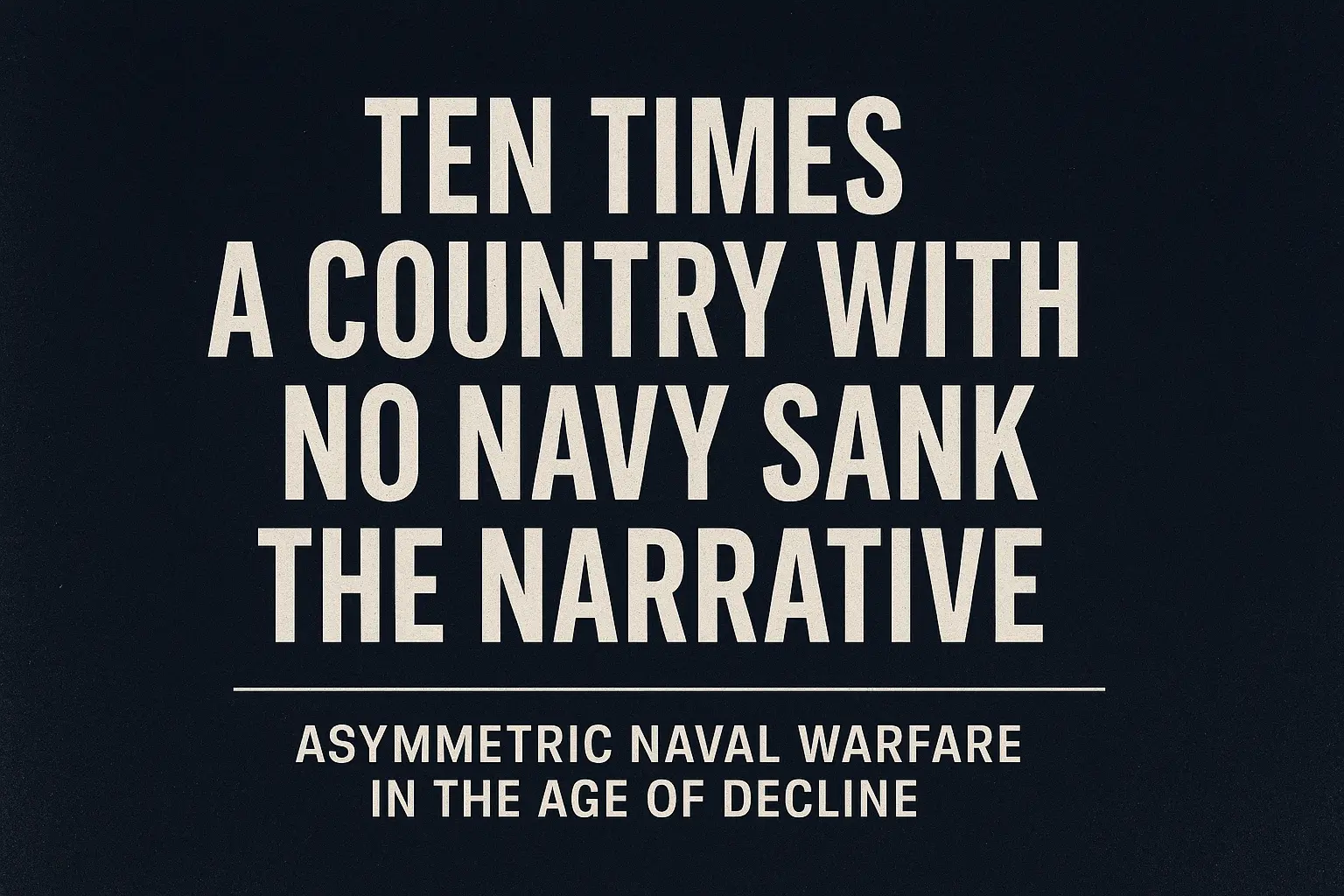
Naval power used to mean tonnage. Big grey ships, radar towers like shark fins, $2 billion destroyers slicing the sea like gods of steel. Aircraft carriers. Guided missile cruisers. Amphibious assault groups. Floating symbols of sovereignty—projection incarnate.
But that era is dying. Slowly, then all at once.
Because over the last few decades—and especially in the past three years—a pattern has emerged. A series of clean kills, humiliations, and forced withdrawals executed not by rival fleets, but by states and non-state actors with no navy at all. No carrier groups. No submarines. No logistical tail. Just enough ingenuity, malice, and terrain to ruin the day of any admiral foolish enough to believe in invincibility.
They’re not fighting on the high seas. They’re fighting from shorelines, deltas, fishing boats, tunnels, and back-end missile platforms. They’re armed with $100,000 drone boats, Cold War-era cruise missiles, retrofitted air-to-air payloads, or the simple audacity to get close enough to detonate. These actors don’t control the sea. They deny it. And in doing so, they’ve forced the global naval order to blink.
In 2022, Ukraine—a country with no functioning navy—sank the Moskva, flagship of the Russian Black Sea Fleet, using two shore-launched Neptune missiles and a little battlefield creativity. The vessel’s pride went down with it. In 2023, they followed that up with a campaign of sea drone strikes so effective that Russia was forced to relocate major portions of its fleet to safety.
In Yemen, the Houthis—a tribal militia with glorified speedboats—have turned the Red Sea into a graveyard of maritime assumptions. They’ve struck Emirati high-speed vessels, harassed U.S. destroyers, and shot down Reaper drones mid-air. One U.S. fighter jet was even taken out by friendly fire in the confusion. If your warship is operating within 500 kilometers of Yemen in 2025, you’re not patrolling—you’re surviving.
The reality is simple: naval supremacy is no longer about who can build the biggest ship. It’s about who can deny the sea to others at a lower cost. The age of surface fleet dominance—unquestioned since the Second World War—is being ripped apart not by rival superpowers, but by bottom-dollar enemies with top-tier intent.
This list isn’t a memorial. It’s a manual. A breakdown of 10 moments where the myth of maritime invincibility got shattered by a player who wasn’t even supposed to be on the board. In each case, we’ll give you the tactical breakdown, the strategic implications, and the real reason it matters.
Because if you’re still measuring naval power in gross tonnage, you’ve already lost. And if you’re still betting on hulls over havoc, you’re the next one going under.
Now let’s count them down—from minor humiliations to complete naval exorcisms.
In 1939, the Soviet Union launched a war of imperial arrogance against Finland. They expected a three-week conquest. They got five months of humiliation—and one of the most underrated asymmetric naval victories in history. Finland didn’t have a navy in any meaningful sense. A few patrol boats. Some icebreakers. Nothing that could stand against the massive Soviet Baltic Fleet.
But they did have something else: terrain, frozen coastlines, and artillery crews who could hit a moving target in the dark.
When the Red Navy tried to project force into the Gulf of Finland and along the southern coast, they found themselves within range of pre-sighted Finnish shore batteries. The destroyer Smely was hit and sunk by Finnish 152mm coastal artillery. Others were driven back or damaged. Soviet attempts at amphibious landings were halted outright—not by minesweepers or submarines, but by shore crews in wool coats with iron discipline.
And then winter hit.

Credit: alternativefinland.com
By January, the sea froze. Soviet ships couldn’t maneuver. Infantry support from the water was gone. Finnish forces moved across the ice, cutting off Soviet coastal units and encircling their landing zones. The ice turned into terrain—and terrain into death.
This wasn’t a war won at sea. But it was a war where the sea was weaponized without a fleet.
Strategic Takeaway:
A coastline is not a passive border—it’s a defensive weapon. And when geography fights on your side, you don’t need a navy. You just need range, patience, and weather colder than Russian propaganda.
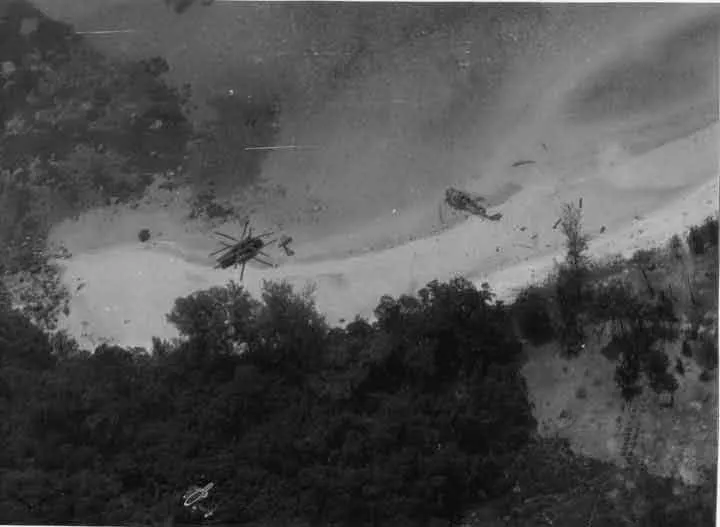
By 1975, the Vietnam War was over—on paper. But the final embarrassment wasn’t delivered by the Viet Cong or the North Vietnamese Army. It came from the Khmer Rouge, an agrarian-Marxist regime in Cambodia, armed with rifles, machetes, and zero ships of war.
On May 12, 1975, Khmer Rouge gunboats seized the American merchant vessel SS Mayaguez in international waters near the Gulf of Thailand. No warning. No provocation. No navy. Just a handful of fighters on repurposed patrol craft making a high-stakes grab.
Washington, still licking its wounds from Saigon’s fall weeks earlier, went ballistic. A rapid response operation was thrown together with Marines, helicopters, and limited intel. The plan: assault Koh Tang Island, where the crew was believed to be held. Problem: the crew wasn’t there. They’d already been moved—or released. The island was heavily fortified. What followed was a disaster.
U.S. helicopters were shot down. Marines were killed on the beach, caught in crossfire with no intel and no backup. A total of 41 American servicemen died, including three Marines accidentally left behind and later executed. All to rescue a crew that was, by then, on its way home.
The Khmer Rouge had no naval doctrine, no capital ships, no maritime tradition. And yet, they forced the United States—the most powerful military force on the planet—into a hasty, blood-soaked retreat. And they got away with it.
The value of a naval victory isn’t always in what you sink. Sometimes, it’s in what you provoke. The Khmer Rouge turned a second-rate merchant seizure into a first-rate geopolitical farce. A navy-less state humiliated a superpower by exploiting its psychological fragility and its need to flex. If you understand how your opponent needs to respond, you can choreograph their downfall.

Iraq never had a real navy. A few patrol boats, Soviet leftovers, and some token frigates whose real job was to look photogenic on state TV. But Saddam Hussein did have something else: coastal missile batteries, Chinese-made Silkworms, and a flair for theater.
In 1991, during the Gulf War, Iraq launched a Silkworm missile at the USS Missouri, the last active U.S. battleship. Think about that. A Cold War relic, targeting a World War II relic—two ghosts from different empires meeting in the night. The Missouri’s Phalanx CIWS—basically a ship-mounted minigun—tore the missile apart midair. Tactical success. Strategic pants-shitting.
The shot was cheap. The psychological impact wasn’t.
But this wasn’t Iraq’s first naval flex. Four years earlier, in 1987, an Iraqi fighter jet “accidentally” fired two Exocet missiles at the USS Stark, an American frigate on patrol in the Persian Gulf. Both hit. One detonated. 37 U.S. sailors were killed. Iraq never admitted to doing it on purpose—but the U.S. still doubled down on Iraq as a regional partner. Because geopolitics is war crimes dressed in oil contracts.
Iraq didn’t win any sea battles. They didn’t need to. Their missiles gave the world’s largest navy a permanent twitch—and reminded every destroyer captain in the Gulf that the coastline has teeth.
A $200,000 missile can force a $2 billion ship into defensive posture for days. You don’t need a navy if you can hold one at gunpoint from 150 kilometers inland. Surface fleets project power. Shore batteries deny it. And sometimes, one rogue shot is all it takes to shake a doctrine.
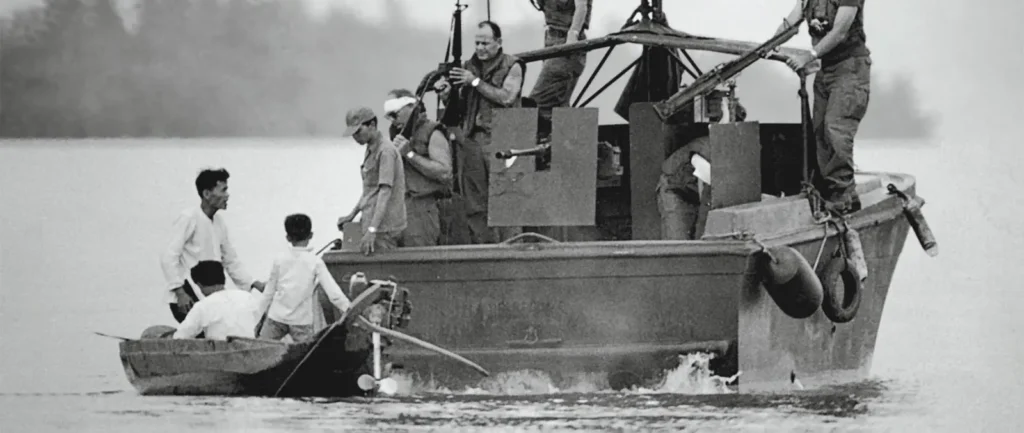
The United States Navy showed up in Southeast Asia with aircraft carriers, guided missile destroyers, and the swagger of a post-WWII superpower. North Vietnam had no navy—at least not in the conventional sense. What they had were PT boats, riverine fighters, naval sappers, and the sheer will to turn every stretch of water into a trap.
Let’s start with the spark: the Gulf of Tonkin incident, August 1964. North Vietnamese torpedo boats allegedly attacked the USS Maddox, prompting President Lyndon Johnson to escalate U.S. involvement. To this day, it’s debated whether the second attack even happened. But North Vietnam managed to drag the U.S. into a war with what may have been a phantom naval encounter—a masterclass in strategic bait.
Once the war kicked off, Vietnam’s rivers became blood channels. PT boats and sampans loaded with explosives attacked U.S. vessels and logistical traffic up and down the Mekong Delta. Floating mines were dropped at night and detonated via command wires or simple contact. U.S. riverine craft were sunk or crippled by guerrillas in hip-deep water. And then there was Haiphong Harbor: in 1972, the U.S. Navy had to mine it from the air to keep Soviet supply ships out—because trying to control it conventionally had become a logistical nightmare.
North Vietnam even managed to damage U.S. destroyers, including the USS Higbee, which was bombed by North Vietnamese MiGs in 1972—while offshore.
No fleet. No shipyards. No naval prestige. Just rivers, ingenuity, and an iron understanding of the terrain. The Americans had blue-water dominance. Vietnam weaponized the brown water and bled them out, one ambush at a time.
You don’t have to fight the fleet to beat the fleet. You just have to make the water they sail through ungovernable. From Tonkin to the Mekong, North Vietnam exposed the soft underbelly of Western sea power: it’s not the hulls that matter—it’s the environment. The U.S. brought ships. Vietnam brought the tide.
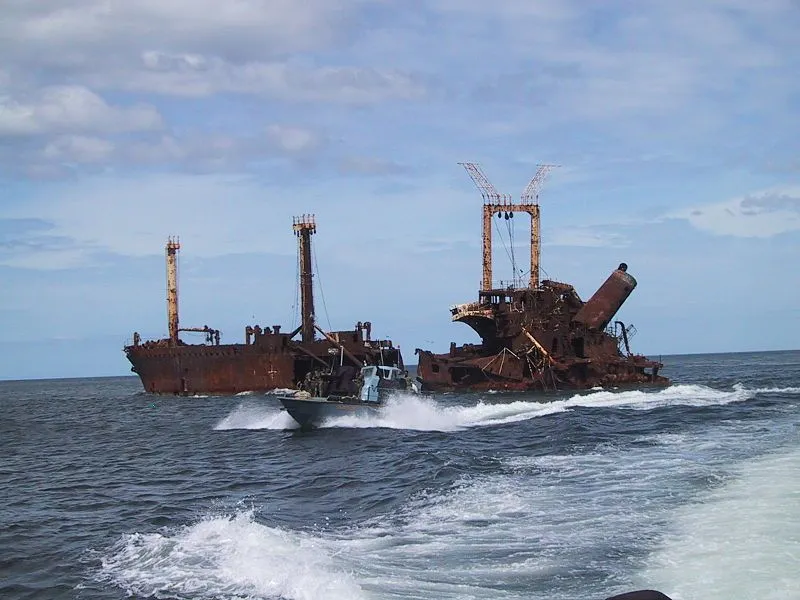
The Tamil Tigers didn’t just build an insurgency. They built a navy. From scratch. No ports. No flag. No blue water dreams. Just fiberglass hulls, repurposed fishing boats, and a complete willingness to die for the mission. They called it the Sea Tigers, and for nearly two decades, this guerrilla fleet terrorized the Sri Lankan Navy in one of the most brutally inventive asymmetrical naval campaigns ever executed.
Sea Tigers operated like naval insurgents with Silicon Valley energy. They weaponized everything: suicide boats packed with explosives, low-profile fast attack craft that could swarm radar gaps, underwater demolition teams, even frogmen who swam into navy bases to mine ships at anchor. They moved arms, smuggled goods, and carried out sabotage raids—all while being hunted by a national military with air and sea superiority.
Sri Lanka lost dozens of vessels—from patrol boats to transport ships—because a stateless insurgency figured out that speed, stealth, and suicidal intent are sometimes enough. One of their most effective tactics? Wave attacks, where suicide boats would flank, bait, and then hit Sri Lankan warships from the blindside while others provided suppressive fire with mounted RPGs and machine guns. It was battlefield choreography, from sea level.
In 2006, the Sea Tigers even ran a coordinated amphibious raid, using attack boats to land forces and conduct hit-and-run assaults on coastal targets. For a moment, it looked like they were going to force Sri Lanka into a maritime stalemate.
Eventually, the tide turned. The Sri Lankan military adapted, using airstrikes and new naval doctrines to intercept the Sea Tigers’ supply lines and floating weapons warehouses. But by then, the damage was done: a stateless actor with no navy had rewritten the rules of regional sea power.
The Sea Tigers proved that naval supremacy is not about who has the most tonnage—it’s about who controls the tempo. If your enemy can hit you at will, disappear into the coastline, and make every radar ping feel like a warning shot, you’re not dominant. You’re prey. The Sea Tigers didn’t want to win the sea. They wanted to make it bleed.
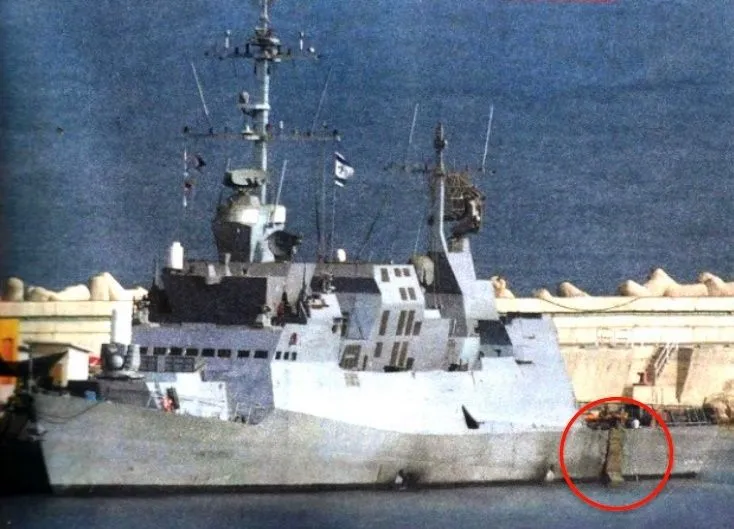
July 14, 2006. Four days into the Israel–Hezbollah War, the Israeli Navy corvette INS Hanit was stationed off the coast of Lebanon, enforcing a blockade. It was a Saar 5-class ship, bristling with radar systems, electronic countermeasures, and layered defenses. In other words, exactly the kind of ship that isn’t supposed to be surprised.
Hezbollah surprised it anyway.
Firing a Chinese-made C-802 anti-ship missile—smuggled into Lebanon with Iranian assistance—the group struck the Hanit with precision. The ship’s defense systems were offline. Not due to a malfunction, but reportedly because its commander didn’t believe Hezbollah had the capacity to mount a serious maritime threat. That assumption cost four Israeli sailors their lives and nearly took the ship down.
This wasn’t a fluke. Hezbollah launched two missiles. The second one missed Hanit but hit an Egyptian civilian vessel, causing additional casualties. A group operating out of caves and apartment basements had just inflicted real, kinetic damage on one of the Middle East’s most technologically advanced navies.
The implications were tectonic. Israeli naval doctrine had not prepared for shore-based missile attacks of this kind. Suddenly, patrol zones were retracted. Engagement distances extended. The Navy was no longer just enforcing a blockade—it was now defending its own survival in the littorals.
And Hezbollah? They just proved that if you can fire from land and land a hit, you don’t need a single hull on the water to be considered a naval threat.
The Hanit strike ended an era of overconfidence. One missile redefined Hezbollah from a terrorist militia to a fully capable hybrid force. The lesson: even your most advanced ship is just a steel coffin if you underestimate who’s watching from shore. In modern warfare, there is no “safe distance.” And there is no such thing as an unarmed actor.
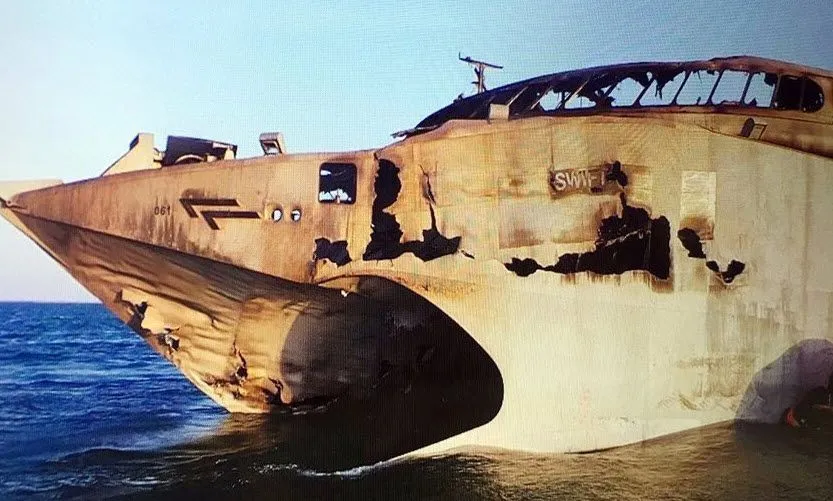
They started with rifles and slogans. Now they’re dictating global naval posture from a failed state.
The Houthis, backed in part by Iran but never fully controlled by anyone, have pulled off the most sustained asymmetric naval campaign of the 21st century. No warships. No formal navy. No logistics fleet. And yet—by 2025, they’ve managed to cripple shipping in the Red Sea, provoke near-daily intercept operations by the U.S. Navy, and turn drone warfare into maritime doctrine.
It began with the sinking of the HSV-2 Swift, a high-speed transport vessel formerly leased by the U.S. Navy and operated by the UAE. It was hit by what was likely a C-802 or Noor missile, fired from land. The Swift burned in the water. The message was clear: the Bab el-Mandeb Strait was no longer safe.
Over the next several years, the Houthis escalated.
By 2025, the Houthis had successfully shut down lanes through the Red Sea, forcing global carriers to reroute through the Cape of Good Hope. The U.S., U.K., and other navies are now stuck in a game of expensive whack-a-mole against an enemy that fires $5,000 drones at $1.8 million missiles.
The Houthis don’t want to control the sea. They want to ruin its value. And they’re doing it well.
You don’t need a blue-water fleet to choke maritime power. You just need drones, targeting data, and nothing to lose. The Houthis built a strategic dead zone from shore, turned superpowers into perpetual reaction machines, and proved that trade routes are only as safe as the weakest state they pass. In the Red Sea, that state brought down giants.

April 14, 2022. In the Black Sea, the Moskva—flagship of Russia’s Black Sea Fleet—was sailing comfortably, overconfident and under-defended. The ship was meant to be a symbol: a Cold War-era guided missile cruiser, bristling with surface-to-air systems, anti-ship missiles, and the pomp of imperial inertia. It was the face of Russian sea power.
And Ukraine blew it straight to hell.
Two R-360 Neptune missiles, launched from the Ukrainian coast, hit the Moskva. One struck near the port side; the other is believed to have penetrated deeper into the hull. Damage control efforts failed. Fires raged. Ammunition cooked off. And within 24 hours, the Moskva—a $750 million cruiser designed to command fleets—sank into the Black Sea.
The Ukrainians had no functional fleet. Their navy was mostly wiped out or scuttled back in 2014 when Russia annexed Crimea. What they had was ingenuity, resolve, and a homegrown missile system based on modified Soviet tech. A Turkish TB2 drone may have played decoy, drawing the Moskva’s radar away. The kill was methodical, clean, and devastating.
Russia first claimed an accidental fire. Then an ammunition explosion. Only much later—after satellite imagery and crew evacuations—did the world learn the truth. A flagship had been neutralized by a country whose navy technically no longer existed.
The implications were immediate:
But more importantly, the Moskva became a meme. A metaphor. A strategic obituary.
You don’t need a navy to kill a fleet. You just need the ability to hit what matters—and the audacity to try. Ukraine turned coastal missile batteries into regime humiliation tools. With $1 million in missiles, they wiped out a Cold War symbol and shattered the myth of Russian naval invulnerability. The Moskva didn’t just sink. The entire Black Sea posture went down with it.

Sinking the Moskva was just the overture. What followed was the full-scale orchestration of humiliation—an asymmetric naval campaign so relentless, so inventive, and so sustained that it forced Russia’s Black Sea Fleet into retreat. Not in theory. In practice. Entire squadrons relocated from Sevastopol to Novorossiysk, far from Ukrainian reach. That’s not a redeployment. That’s surrender.
Ukraine didn’t rebuild a navy. They built something better: a fleet of unmanned kamikaze sea drones, crafted in secret workshops, guided by Starlink, and armed with explosive payloads. The Magura V5, Sea Baby, and other low-cost naval drones became guided torpedoes with GoPro eyes and national rage in their circuits.
Key strikes included:
Ukraine isn’t just fighting with drones. They’re merging war domains—land, sea, and air—through remote warfare. No nation has executed more successful sea drone strikes in modern history. And no navy has looked more out of its depth than Russia’s, as its ships were forced to stay docked or stay sunk.
The Black Sea is now a no-go zone—not for Ukraine, but for Russia. And it was achieved not with destroyers or submarines, but with repurposed jet skis, commercial electronics, and a nihilistic understanding of modern war economics.
Ukraine has redefined sea power. You don’t need to control the water—you just need to haunt it. With drones priced like sedans and payloads aimed like sniper rounds, Kyiv dismantled a regional fleet without launching a single manned vessel. The doctrine? Deny everything. Float nothing. Hit always.

They don’t have a navy. They don’t have a state. And they don’t give a damn about your trade routes.
By 2025, Yemen’s Houthi rebels had done something no one else on this list managed: they effectively shut down a global shipping corridor. Not for a day. Not for a week. But for months on end. The Red Sea, conduit for 15% of global trade, became a live-fire zone. Insurance costs skyrocketed. Oil tankers rerouted thousands of kilometers. And Western navies found themselves reacting, endlessly, to a group that operates out of caves and shipping containers.
This wasn’t a singular strike—it was sustained maritime attrition, fought with Iranian tech, garage-built drones, and the knowledge that no one wants to start another Middle Eastern war. So the Houthis struck, and struck again:
In effect, the U.S. Navy—undisputed master of the oceans—was pinned down by a tribal militia with no warships, no submarines, and no ability to resupply. Western governments launched “Operation Prosperity Guardian,” a multinational response effort. But even then, shipping companies voluntarily abandoned the Suez route, rerouting around the Cape of Good Hope—a move that costs millions per voyage and adds up to two weeks in transit time.
The Houthis didn’t win control of the sea. They made it uncrossable. That’s a different kind of victory. And it’s arguably more dangerous. It proved that global infrastructure could be denied not by missiles or navies, but by willpower, persistence, and enough drone batteries to outlast your rules of engagement.
This wasn’t just a naval success. It was a proof-of-concept for fourth-generation sea denial. You don’t need to hold the sea. You just need to make it unusable. And if you can do that from the shore—while remaining technically stateless—you win the century’s first real maritime insurgency. The Houthis weren’t trying to defeat the U.S. Navy. They were trying to make the sea irrelevant. And they’re halfway there.
[…] In the early hours of February 1, 2024, the Russian Navy’s Ivanovets — a Tarantul-class missile … […]